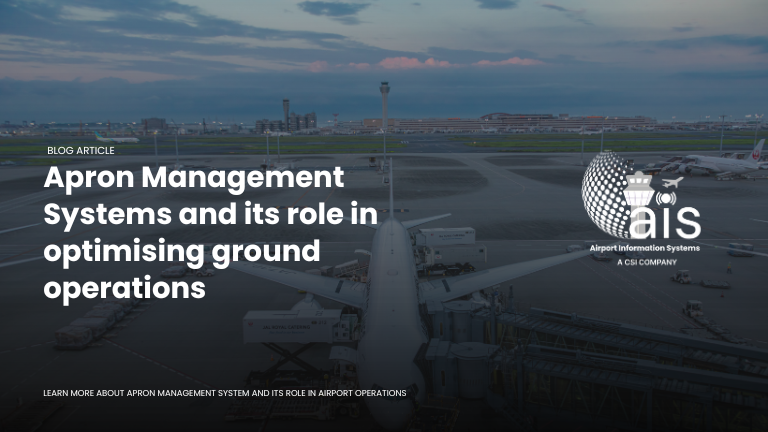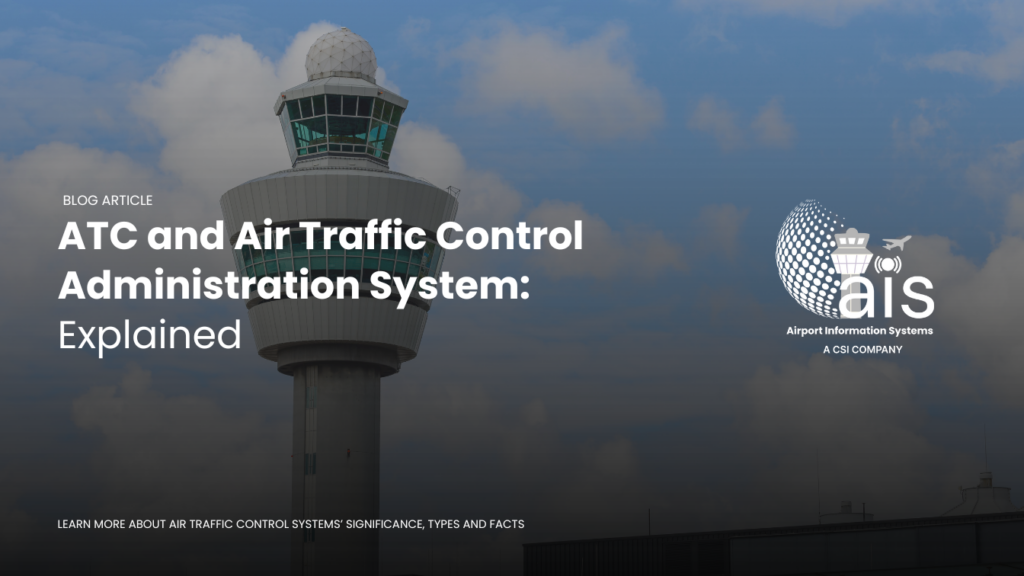An Airport is a complicated piece of infrastructure that has numerous components and software systems that must go hand-in-hand in order to make all operations work efficiently. One such major system is the Apron Management from AFIDS or Airport Flight Information Display System.
There are various physical zones in an airport such as the runway, taxiway, apron, terminal, control tower, hangar etc
All of these zones must be managed and coordinated in real time as there are numerous points of failure here, where, even if one aspect goes wrong, the entire process will get disrupted and may cause delays and unnecessary shutdowns.
One such process is Apron Management. This focuses on coordinating the aircraft and ground operations pertaining to that particular aircraft – viz fuel systems, external power supply, catering, drainage services, supplying de-icing fluid, other trivial maintenance work, etc.
Importance of Apron Management
In the world of aviation, every single process, however small it may sound, is of utmost importance. Whether it’s the meticulous inspection of an aircraft’s engine, the precise coordination of air traffic, or the careful loading of baggage onto a plane, each step plays a critical role in ensuring the safety and efficiency of every flight, ultimately catering to the well-being of passengers, aircraft, and the airport alike.
That said, here are some of the reasons why Apron Management is crucial to an airport’s operations:
Safety & Efficiency
The apron is often the most dangerous place at an airport, where specialized equipment and people with different priorities gather to perform their work, often under significant pressure from time and space constraints. A well-managed apron not only reduces accidents but also improves efficiency and the quality of customer service. It allows for the safe and efficient assignment of flights to gate positions, maximizing operational flexibility in the gate area. This also helps reduce aircraft turn-around time, loading and unloading time, etc, which in turn enables more air-craft to dock at that particular gate, helping improve the gate availability and the number of passengers and aircraft the airport can accommodate in a day.
Control & Coordination
Apron management involves the regulation of the activities and movement of aircraft, vehicles, and personnel in the apron area. This includes the prevention of collisions between aircraft and obstacles, coordination of entry and exit aircraft to an apron area, and safe movement of vehicles. It also ensures that essential resources, such as ground support equipment, fuel, and personnel, are allocated efficiently. This minimizes delays and optimizes the use of airport resources. Efficient apron management also encourages collaboration and communication among various airport stakeholders, including airlines, ground handlers, air traffic control, and airport authorities. This cooperation is essential for the smooth operation of the airport as a whole.
Regulatory compliance
Airports must adhere to aviation regulations and safety standards. Apron management ensures that these regulations are met, helping the airport maintain its legal and operational integrity.
Environmental Impact
Efficient apron operations can reduce aircraft idle time, resulting in lower fuel consumption and reduced emissions. This is important for reducing an airport’s carbon footprint and improving environmental sustainability.
Advantages of using AFIDS for Apron Management for your airport
At AIS, we believe that with the advent of digital transformation and artificial intelligence, apron management can be enhanced further.
This is precisely why we have developed a state-of-the-art system for apron management, under our AFIDS (Airport Flight Information Display System) software.
AFIDS is a data collection and processing software, where data is gathered and processed in real-time. This works in conjunction (or on a standalone basis) with our ALDIS (Airport Landing Dues Information System) software for accurate billing & invoicing, as well as FIDSNet (Flight Information Display System Network), to display relevant information around the airport.
Apron management systems were initially designed to optimise ground operations by ensuring the safe and efficient movement of aircraft.
These days, apron management consists of a lot more than that. Increasingly, companies expect their software to have statistical tools, such as in AFIDS. These advanced analytics allow our customers to gain valuable insights from the data generated during apron operations.
By analyzing factors such as aircraft movements, gate utilization, resource allocation, and turnaround times, airports can make data-driven decisions to optimize processes, reduce costs, and enhance the overall efficiency and quality of service.
Our AFIDS software also allows airlines and handling agents to input information in real-time, such as stand allocation, ground services, fuel status, and more. This information can be used to generate statistical data for apron equipment and personnel planning. Air Traffic Control can also view the assigned stand information, improving airport management efficiency by directing aircraft to the correct stand/air-bridge without having to communicate with apron services by radio or phone.
As the aviation industry continues to evolve, the role of advanced statistical tools in apron management systems is likely to become even more important.
As a company that manages an airport – whether large or not – one must stay ahead of the curve. And you can take a step in the right direction by booking a demo with us, and seeing for yourself how we are transforming airport operations all over the world.
How do Apron Management Systems ensure smooth flight operations?
Apron Management Systems are designed to address the complex and dynamic nature of the apron environment, which involves various aircraft movements, ground service activities, and safety considerations.
Aircraft Parking and Allocation
Apron Management Systems allocates parking positions for arriving and departing aircraft based on factors like aircraft type, size, and the availability of gates. This ensures that aircraft are parked efficiently, reducing congestion and enabling better resource management.
Real-Time Data Analysis
Apron Management Systems constantly collects and analyzes data from various sources, including air traffic control, flight schedules, weather conditions, and actual apron activities. This real-time data allows for adaptive decision-making, ensuring that the apron remains responsive to changing circumstances.
Support Resource Allocation
These systems also manage ground support equipment and personnel. This includes allocating the appropriate number of passenger boarding bridges, baggage handling systems, and fueling stations for each flight. Efficient resource allocation reduces turnaround times between flights.
Gate Assignment
Airlines and airports often have specific gate assignments for flights. Apron Management Systems facilitates gate assignment based on airline preferences, minimizing confusion and ensuring that passengers board the correct aircraft.
Safety and Compliances
Apron Management Systems assists in complying with various aviation regulations and safety standards, thereby ensuring the security and safety of both passengers and airport personnel.
Conclusion (TLDR):
Efficient apron management is essential for minimizing aircraft turnaround times, enhancing passenger and cargo handling, and ensuring the overall safety of apron operations. As airports grow and handle more traffic, the need for effective Apron Management Systems becomes increasingly important to maintain smooth and safe operations on the apron.
The AFIDS system by AIS enables efficient and effective ground operations and apron management in real-time. Airport Information Systems has helped airports around the world to streamline their operations and display systems, resulting in a more efficient and effective airport experience for passengers. Interested to know more about our state-of-the-art apron management system?


